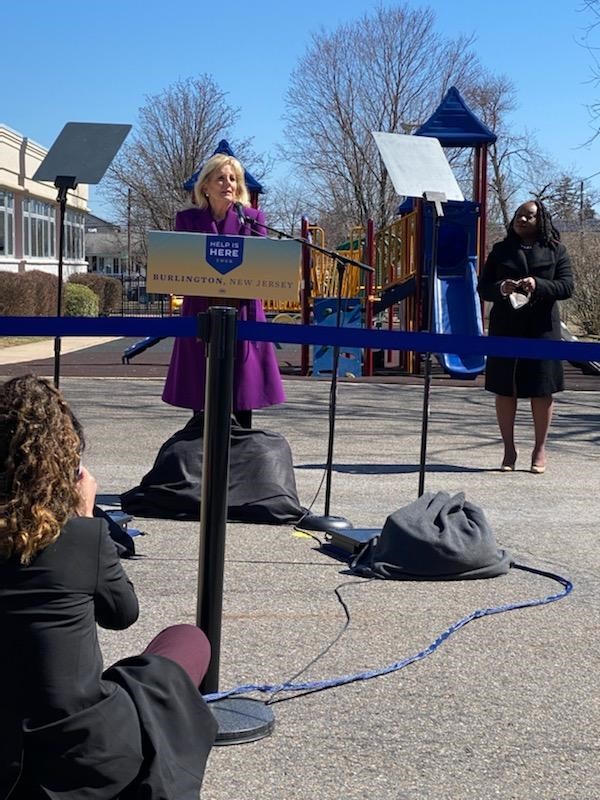Biden-Harris Administration Takes Actions to Support Students’ Basic Needs and Mitigate the Spread of COVID-19 at Colleges and Universities

Today, the U.S. Department of Education (Department) announced more resources for students and institutions to help reduce barriers to success in higher education, particularly those created and exacerbated by the COVID-19 pandemic—including the Omicron variant. Today’s announcements include: an additional $198 million in American Rescue Plan funds that will primarily support community colleges and other institutions with the greatest needs; new guidance on how colleges can use these new and existing federal funds to meet students’ basic needs such as housing and food security; and guidance on how colleges can use existing data to connect students to other federal benefits, such as the Supplemental Nutrition Assistance Program (SNAP) and the Affordable Connectivity Program at the Federal Communications Commission.
U.S. Secretary of Education Miguel Cardona and First Lady Jill Biden highlighted these new actions during a visit today to Bergen County Community College, which has used federal pandemic relief funds to support its students’ basic needs, including providing access to childcare on campus for student parents, discharging unpaid student balances so students can remain enrolled, and bolstering mental health counseling programs.
“In speaking with students from across the country at all different types of higher education institutions, I have heard consistently that the pandemic has exacerbated challenges in meeting students’ basic needs, from housing, to food, to transportation, and more,” said U.S. Secretary of Education Miguel Cardona. “We cannot let this be a barrier to student success, particularly for students who have contended with these issues for far too long. The resources we are announcing today will be critical to ensuring that students can persist and successfully complete their degree programs without having to worry about where their next meal will come from or whether they will be able to find childcare for their children.”
The American Rescue Plan provided nearly $40 billion for colleges and universities through the Higher Education Emergency Relief Fund (HEERF). The American Rescue Plan has made historic investments in many of our nation’s historic or under-resourced institutions that educate students whose communities were most acutely affected by the pandemic. These investments include more than $10 billion to community colleges, more than $2.6 billion to Historically Black Colleges and Universities (HBCUs), approximately $190 million to Tribally Controlled Colleges and Universities (TCCUs), and more than $13 billion to Minority Serving Institutions (MSIs), such as Hispanic-Serving Institutions (HSIs) and Asian American and Native American Pacific Islander-Serving Institutions (AANAPISIs).
This funding has been a necessary lifeline to aid colleges in meeting urgent public health needs to prevent and respond to the Coronavirus pandemic. According to a recent survey of college presidents conducted by the American Council on Education, nearly 90 percent of institutions used HEERF to purchase COVID-19 tests, conduct health screening, and meet other urgent health needs. Colleges have also used funds to support the continued enrollment and re-enrollment of students while expanding access to programs that lead to in-demand jobs.
Examples of colleges using HEERF to prevent and respond to the Coronavirus:
- COVID-19 Mitigation: East Carolina University in North Carolina is using HEERF to cover the cost of a multi-layered approach toward COVID-19 mitigation including testing, contact tracing, and supplies such as personal protective equipment for students, faculty, and staff.
- Supporting Continued Enrollment and Re-enrollment: Santa Ana College in California created a campaign to re-engage students that stopped out or didn’t enroll. Staff called students and offered help with registration; connected students to support services including academic counseling and broadband support; and emergency aid from stimulus packages.
- Forgiving Institutional Debt: Grambling State University in Louisiana used HEERF grant funds to cancel $1.5 million in institutional debt (i.e., unpaid institutional balances) for students.
- Expanding Programs that Lead to In-Demand Jobs: Johnson County Community College in Kansas used HEERF aid to fund free or low-cost workforce programs for workers who lost their job as a result of the pandemic.
Today’s announcements include:
Providing access to $198 million in American Rescue Plan funding for students and institutions with the greatest unmet need
The Department announced that it will be inviting applications next week for a $198 million grant opportunity under the Supplemental Support under American Rescue Plan (SSARP) program to support colleges and universities with the greatest unmet needs related to the COVID-19 pandemic. In awarding funds, the Department will prioritize community colleges and rural institutions of higher education (IHEs) that serve a high percentage of low-income students and have experienced enrollment declines since the start of the pandemic. Funds will be awarded in late spring. As institutions continue to address the immediate challenges brought on by the pandemic, the Department encourages eligible institutions to use SSARP funds toward 1) evidence-based practices to monitor and suppress Coronavirus, 2) strategies for addressing students’ basic needs, 3) support for students’ continued enrollment and re-enrollment, 4) forgiveness of institutional debts, and 5) the expansion of programs that lead to in-demand jobs.
Providing new guidance to colleges and universities on using American Rescue Plan funds to meet students’ basic needs
The Department published new guidance to further assist institutions seeking to provide students with the basic needs supports to persist academically and navigate challenges exacerbated by the pandemic. The guidance provides examples of how colleges and universities can use the institutional portion of their HEERF grants to make initial investments into basic needs supports for students and expand the reach of existing supports to help students navigate financial challenges because of the COVID-19 pandemic, including insecurity with housing, food, and childcare. The guidance also highlights leading colleges already using HEERF funds for these efforts, including Bergen County Community College which used HEERF funds to subsidize tuition for their on-campus Child Development Center to remove financial barriers to students’ education.
Announcing $5 million in new grant funding toward addressing basic needs
The Department is announcing nearly $5 million in grants that were awarded to six community colleges to develop new initiatives to address students’ basic needs. These institutions will implement programs to expand access to food, housing, and healthcare for the students on their campuses. All six award winners are both community colleges and Hispanic Serving Institutions: Montgomery College (MD), Los Angeles City College (CA), Rio Hondo College (CA), Hartnell Community College District (CA), McLennan County Junior College District (TX), and Passaic County Community College (NJ).
Connecting students to other federal resources to address basic needs
The Department is also sending a Dear Colleague Letter to all public and private higher education institutions informing them that they can use Free Application for Federal Student Aid (FAFSA®) data to communicate with students about other public benefits programs that they may be eligible for, such as SNAP and the Affordable Connectivity Program. The letter encourages colleges to coordinate with campus stakeholders, like student organizations, financial aid administrators, or student life groups, to inform their campus community of these benefits.
These announcements will enable all institutions to continue to meet the needs of their students through new and existing HEERF funding and keep students on a pathway to graduation and success in the job market. For far too many students, the pandemic has meant missing classes, skipped meals, and housing insecurity, on top of the stress of navigating a novel pandemic and we are hopeful this will help institutions meet those students’ needs even better than they were before. These announcements also reflect the Department’s broader commitment to providing support, resources, and guidance to institutions, students, and communities throughout the pandemic.
For more information on HEERF under the American Rescue Plan, please visit our website.
The institutions identified are provided as examples and for information purposes only. The inclusion of these entities should not be construed as an endorsement by the U.S. Department of Education, or the federal government, of any product, service, or venture of the institution.





